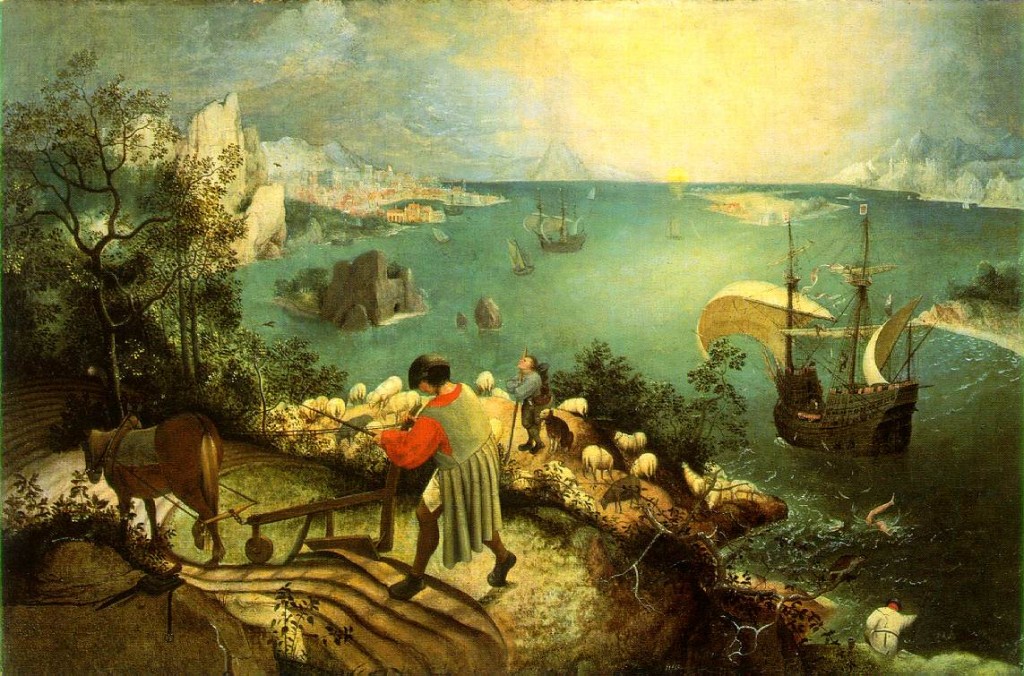The Painting Description
„Icarus’s Fall” by Pieter Brueghel is an example of realistic painting. It was painted around 1558, XVI-th century. The composition of the painting is dynamic and open. Breughel painted it taking inspiration from an ancient myth of Daedal and Icarus. It depicts the death of the son.
In the foreground we see a farmer ploughing. He is wearing a red shirt and a beige vest, shoes and a hat that covers his forehead. In the background there is a meadow with a shepard guarding his flock of sheep. He is accompanied by a mongrel. He is dressed in a blue shirt, trousers, shoes and a hat swung on his back. In the right-hand corner there is a fisherman sitting on the seashore. He is watching a ship and its wide sails unfurled. We can even notice some sailors occupied onboard. In the left – hand corner there is a bustling city.
It is difficult to find Icarus in the picture; he is in the right – hand corner, between the fisherman and the ship. He is drowning with his one hand and legs stretched out of water. Nobody seems to notice him. He is dying quietly alone and life of everybody else goes on.
The colour scale of the painting is from blue of the sea to brown of the field. The shades are dim and muted. These are the colours that create a melancholic and nostalgic mood of the painting. Only the colours seem to indicate the tragedy of the dying man.
This painting is worth admiring as it makes us realize how often we do not notice the tragedy of people around us.
- in the foreground – na pierwszym planie
- plough – orać
- in the background – w tle
- meadow – łąka
- right-hand corner – prawy róg
- unfurl – rozwijać
- bustle – krzątać się
- muted – przytłumiony
- indicate – wskazywać

